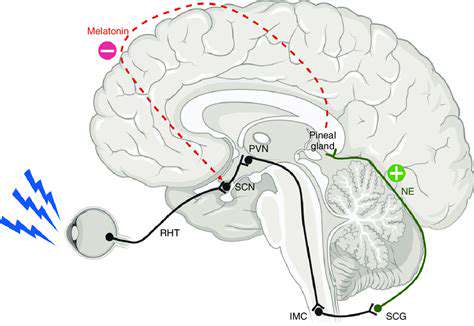Understanding Osteoarthritis vs Rheumatoid Arthritis
Understanding the Underlying Mechanisms
Osteoarthritis, often referred to as wear and tear arthritis, is a degenerative joint disease characterized by the gradual breakdown and loss of cartilage within the joints. This breakdown occurs over time, typically due to repetitive stress and the natural aging process. The cartilage acts as a cushion between the bones, allowing for smooth movement and absorbing shock. When cartilage is lost, the bones rub against each other, leading to pain, stiffness, and reduced joint function.
The underlying mechanisms of osteoarthritis involve a complex interplay of factors, including genetic predisposition, joint overuse, and the body's natural inflammatory response. While aging is a significant contributor, factors like obesity, previous joint injuries, and certain occupations can accelerate the degenerative process. Understanding these mechanisms is crucial for developing effective prevention and treatment strategies.
Risk Factors and Contributing Factors
Various risk factors contribute to the development and progression of osteoarthritis. Age is a significant factor, as the risk increases with advancing years. Obesity places substantial stress on weight-bearing joints like the knees and hips, increasing the risk of osteoarthritis. Previous joint injuries, such as fractures or ligament tears, can create vulnerabilities and accelerate cartilage degeneration.
Certain occupations or activities demanding repetitive stress on specific joints, such as manual labor or certain sports, can also increase the risk. Genetic predisposition plays a role, as some individuals may inherit a greater susceptibility to cartilage breakdown. While these factors increase risk, they do not guarantee the development of osteoarthritis, and lifestyle modifications can help mitigate the impact.
Symptoms and Diagnosis
Symptoms of osteoarthritis can vary significantly from person to person and often progress gradually. Common symptoms include pain, stiffness, and swelling in the affected joints, particularly after periods of inactivity or use. These symptoms often worsen with activity and improve with rest. Limited range of motion and creaking or grinding sounds in the joints are also possible indicators.
Diagnosis typically involves a combination of physical examination, medical history review, and imaging tests such as X-rays. X-rays can reveal the loss of joint space and bone spurs, which are common characteristics of osteoarthritis. The doctor will assess the patient's symptoms, activity level, and medical history to determine the appropriate course of treatment.
Treatment Options and Management Strategies
Treatment options for osteoarthritis focus on managing pain, improving joint function, and slowing the progression of the disease. Non-pharmacological interventions, such as weight loss, exercise, and physical therapy, are often recommended as initial approaches. These strategies aim to reduce stress on the affected joints and improve overall joint health.
Pain relievers, both over-the-counter and prescription medications, can help alleviate discomfort. In some cases, corticosteroid injections into the affected joint may provide temporary pain relief. Surgical interventions, such as joint replacement surgery, may be considered in advanced cases when conservative treatments fail to adequately manage pain and improve function.
Lifestyle Modifications and Prevention
Adopting a healthy lifestyle can significantly impact the prevention and management of osteoarthritis. Maintaining a healthy weight through a balanced diet and regular exercise is crucial for reducing stress on weight-bearing joints. Engaging in low-impact exercises, such as swimming or cycling, can help strengthen muscles around the joints and improve flexibility.
Regular physical activity is essential for maintaining joint health and preventing stiffness. Proper posture and body mechanics during daily activities can also help reduce stress on joints. These lifestyle modifications, coupled with appropriate medical care, are key components of effective osteoarthritis management and prevention strategies.
Rheumatoid Arthritis: An Autoimmune Disease
Understanding the Mechanisms of Rheumatoid Arthritis
Rheumatoid arthritis (RA) is a chronic autoimmune disease that primarily affects the joints. Unlike osteoarthritis, which is primarily caused by wear and tear on the joints, RA involves an abnormal immune response where the body's immune system mistakenly attacks its own healthy tissues, including the lining of the joints. This inflammatory process leads to pain, swelling, stiffness, and ultimately, joint damage. Understanding the complex mechanisms behind this autoimmune response is crucial for developing effective treatments and managing the disease.
The exact cause of RA remains unknown, but a combination of genetic predisposition and environmental factors likely plays a role. Certain genes increase a person's susceptibility to developing RA, but environmental triggers, such as infections or exposure to certain chemicals, can also contribute to the onset of the disease. Researchers are actively investigating the interplay between these factors to gain a deeper understanding of the disease's progression.
Symptoms and Diagnosis of Rheumatoid Arthritis
The symptoms of rheumatoid arthritis can vary greatly from person to person, and can range from mild to severe. Early symptoms often include fatigue, low-grade fever, and general malaise. These initial symptoms can easily be overlooked, and it's common for individuals to initially attribute them to other conditions. However, persistent joint pain, swelling, and stiffness, particularly in the small joints of the hands and feet, are key indicators of RA.
Diagnosing rheumatoid arthritis typically involves a combination of physical examination, medical history, and laboratory tests. A rheumatologist will assess the affected joints for inflammation and tenderness. Blood tests, such as rheumatoid factor (RF) and anti-cyclic citrullinated peptide (anti-CCP) antibodies, can help confirm the diagnosis. These tests can detect the presence of antibodies that are often associated with RA, although they aren't always present. Imaging techniques, like X-rays and MRI scans, can also aid in evaluating joint damage and confirming the diagnosis.
Treatment and Management Strategies for Rheumatoid Arthritis
Effective management of rheumatoid arthritis focuses on controlling inflammation, alleviating symptoms, and preventing further joint damage. Treatment approaches often involve a combination of medications, physical therapy, and lifestyle modifications. Disease-modifying antirheumatic drugs (DMARDs) are a cornerstone of treatment, aiming to slow or halt the progression of the disease. These medications can help reduce inflammation and prevent joint damage over time.
Alongside medication, physical therapy plays a vital role in maintaining joint function and improving mobility. Exercises and stretches can help strengthen muscles around the joints, improve range of motion, and reduce pain. Lifestyle modifications, such as maintaining a healthy weight, engaging in regular exercise (within the limits of pain and fatigue), and getting sufficient rest, are also crucial for managing RA and improving overall well-being. Supportive care, including emotional support and counseling, can also be helpful for coping with the challenges of living with this chronic condition.
Furthermore, a balanced diet rich in fruits, vegetables, and whole grains can contribute to overall health and may potentially influence the course of the disease. Avoiding smoking and limiting alcohol consumption are also important lifestyle choices. Collaboration with a healthcare team, including rheumatologists, physical therapists, and other specialists, is essential for developing a comprehensive treatment plan tailored to individual needs.
Similarities and Overlaps

Shared Characteristics
One key area of overlap between various concepts is the presence of shared characteristics. These commonalities, while seemingly subtle, can be crucial in understanding the interconnectedness of different systems or ideas. Identifying these shared threads often reveals underlying principles and allows for a more comprehensive understanding of the subject matter.
For instance, the principles of thermodynamics, while applied to different physical systems, share fundamental characteristics like the conservation of energy. Understanding these shared characteristics allows for a more generalized application of these principles across diverse domains.
Interconnectedness of Systems
Many systems, whether biological, social, or technological, demonstrate interconnectedness. This interconnectedness implies that changes in one part of the system can have cascading effects on other components, making it vital to consider the broader context when analyzing any specific part.
Understanding these interactions is crucial for effective management and problem-solving. For example, changes in the economy often ripple through various sectors, impacting employment, investment, and consumer behavior. Recognizing these interconnectedness is essential for developing effective strategies.
Overlapping Goals and Objectives
Different entities, from organizations to individuals, often pursue goals and objectives that overlap. These overlaps can lead to collaborations and partnerships, allowing for the pooling of resources and expertise to achieve common objectives more effectively.
Identifying these shared goals can facilitate strategic alliances and joint ventures, driving efficiency and innovation. For example, companies in the same industry might have overlapping marketing goals, leading them to collaborate on campaigns and share resources.
Convergence of Trends
In many fields, there's a noticeable convergence of trends. This convergence often leads to the development of new technologies, approaches, or methodologies. This synergy between different trends can accelerate progress and generate innovative solutions.
For example, the convergence of artificial intelligence and big data analytics is leading to the development of sophisticated systems capable of analyzing vast amounts of information and extracting valuable insights.
Mutual Influence and Feedback
Many systems exhibit mutual influence and feedback mechanisms. This implies that the output of one part of the system can influence the input of another, creating a cyclical relationship that shapes the behavior of the entire system.
Understanding these feedback loops is critical for anticipating and managing potential disruptions or instability. A simple example can be seen in supply chains, where changes in demand for a product can trigger a chain reaction of adjustments throughout the entire supply network.
Shared Resources and Infrastructure
The sharing of resources and infrastructure is common in various settings. This sharing can lead to increased efficiency and reduced costs for all parties involved, fostering collaboration and cooperation. These efficiencies are often more pronounced in large-scale systems.
For example, shared computing resources, such as cloud computing platforms, allow multiple users to access and utilize powerful computing capabilities without the need for extensive, individual investments.
Synergistic Effects
When multiple elements or factors combine, they can produce synergistic effects. These effects are greater than the sum of their individual parts. In essence, the combined impact is more substantial than anticipated simply by adding up the contributions of each element.
This phenomenon is observed across various domains, from scientific discoveries to business collaborations. For instance, combining the expertise of different teams can lead to a more creative and innovative solution.
Read more about Understanding Osteoarthritis vs Rheumatoid Arthritis
Hot Recommendations
-
*Guide to Managing Gout Through Diet
-
*Best Habits for Financial Well being
-
*How to Build a Routine for Better Mental Health
-
*How to Eat Healthy on a Budget [Tips & Meal Ideas]
-
*Guide to Practicing Self Acceptance
-
*How to Incorporate More Movement Into Your Day
-
*Guide to Managing Chronic Pain Naturally
-
*Guide to Building a Reading Habit for Well being
-
*Top 5 Weight Loss Supplements That Actually Work
-
*Best Exercises for Postpartum Recovery [Beyond Abdominal Work]




![Best Nutrition for Teen Athletes [Fueling Growth & Performance]](/static/images/26/2025-06/BeyondtheBasics3AMicronutrientsandSupplements.jpg)






